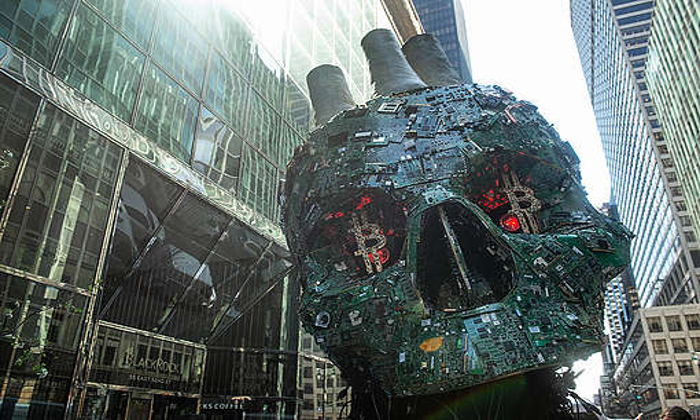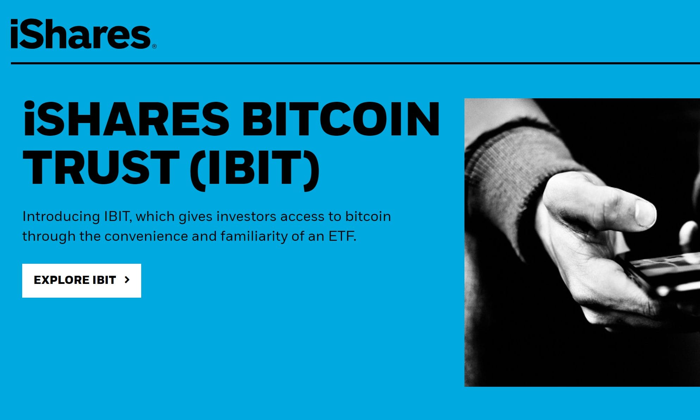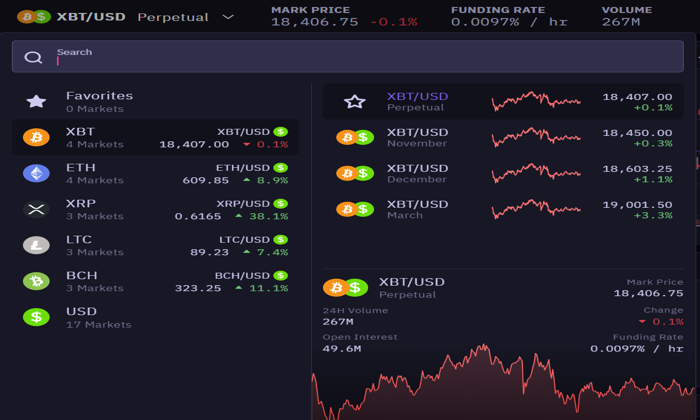The “Skull of Satoshi”, a striking sculpture donated by Ripple to the Bitcoin community, has sparked renewed discussions around collaboration in the often contentious cryptocurrency space. Unveiled during the Bitcoin Conference on May 28, this artwork serves as a symbol of cross-chain unity amidst ongoing cryptocurrency rivalry. Ripple’s CEO, Brad Garlinghouse, believed that the gesture could promote a long-overdue dialogue between the two leading crypto networks. The sculpture, linking Bitcoin’s resilience to ongoing discussions about its environmental impact, is emblematic of a pivotal moment that underscores the importance of solidarity within the cryptocurrency community. As we navigate the tensions surrounding donations like the “Skull of Satoshi”, it is essential to recognize how acts like these could bridge gaps and foster more constructive interactions across different blockchain platforms.
Referred to as the “Satoshi Skull”, this provocative piece of art signifies more than just a creative display; it illustrates intense conversations about the evolving dynamics between major cryptocurrencies. Ripple’s recent contribution aims to unify two historically competing factions, notably Bitcoin and XRP, by highlighting their shared potential for progress in the blockchain ecosystem. Amid rising concerns over the environmental consequences of Bitcoin’s proof-of-work system, the sculpture becomes a conversation starter focusing on sustainability and energy efficiency in cryptocurrency operations. This strategic move could pave the way for increased cooperation among blockchain proponents, igniting discussions around the need for a collective effort towards sustainable practices in the industry. As the digital currency arena evolves, examining these artistic interventions could provide valuable insight into the future of cooperation amidst rivalry.
The Symbolism Behind the Skull of Satoshi
The “Skull of Satoshi” stands as a profound representation of the duality in the cryptocurrency landscape, capturing the ongoing tensions between Bitcoin and alternative coins like XRP. Created by Canadian artist Benjamin Von Wong in collaboration with Greenpeace USA, this sculpture embodies a call to action regarding the environmental impact of Bitcoin’s proof-of-work model. With its stark imagery of a skull crafted from e-waste, the piece serves to challenge Bitcoin developers to reconsider their energy consumption methods, particularly in the wake of increasing global concerns about climate change and sustainability.
Furthermore, the skull symbolizes the potential consequences if the cryptocurrency industry does not pivot toward greener practices. It is a poignant reminder of the urgent need for change, resonating with calls for cross-chain unity. Despite being born from controversial roots, as Ripple CEO Brad Garlinghouse highlighted, it showcases a desire for dialogue among different factions within the Bitcoin community. This cross-chain collaboration indicates a shift in focus from rivalry to cooperative improvement, appealing to both environmental considerations and the need for blockchain innovation.
Ripple’s Donation: A Step Towards Cross-Chain Unity?
Ripple’s donation of the “Skull of Satoshi” has sparked debates surrounding its sincerity and implications for long-standing cryptocurrency rivalries. Some proponents view this act not only as a gesture of goodwill but also as a strategic move to foster cross-chain unity among the blockchain community. By donating this controversial artwork during the Bitcoin Conference, Ripple positioned itself as a bridge-builder, advocating for collaboration over competition. As Garlinghouse noted, this is an opportunity to highlight common goals across different cryptocurrencies, suggesting that BTC and XRP share more than merely their status as digital coins.
However, skepticism lingers, particularly from the Bitcoin community, where the donation is perceived by some as a veiled attempt to undermine Bitcoin’s reputation. As tensions run high, comments from Bitcoin supporters reflect this sentiment, emphasizing that Ripple’s past affiliations with anti-BTC campaigns overshadow its current attempt at solidarity. This situation underscores the intricacies of the cryptocurrency ecosystem, where gestures that aim for unity may also evoke distrust and dissent.
Environmental Concerns: The Future of Bitcoin
As discussions about the sustainability of cryptocurrencies gain momentum, the environmental impact of Bitcoin is increasingly scrutinized. The energy-intensive nature of Bitcoin’s proof-of-work model faces criticism not only from environmentalists but also from those within the cryptocurrency community who are concerned about the long-term viability of the network. Initiatives like Greenpeace’s “Change the Code” campaign echo a growing demand for a shift toward more environmentally friendly consensus mechanisms, such as proof-of-stake, which Ethereum successfully transitioned to in 2022.
While the Skull of Satoshi serves as an artistic critique of Bitcoin’s energy usage, it simultaneously sparks debate on whether Bitcoin can adapt to these environmental challenges while maintaining its core principles of decentralization and security. The conversation is no longer just about technological rivalry between cryptocurrencies; it’s also about their collective responsibility to assert leadership in sustainable practices. With Ripple’s donation, the hope is to ignite further discussions about how various blockchain technologies can collaborate toward solutions that not only enhance their platforms but also align with global sustainability goals.
Community Reactions: Divided Opinions on Ripple’s Gesture
The Ripple donation of the Skull of Satoshi has elicited mixed reactions within the cryptocurrency community, highlighting the intricate dynamics of loyalty and rivalry among the various factions. Supporters view the donation as a genuine effort to bridge the gap between competitors, advocating for unity in addressing shared challenges. In an industry characterized by polarization, this gesture was intended to inspire dialogue and advocate for a cooperative approach to promoting blockchain improvements. It signifies an attempt to elevate environmental awareness across all digital currencies.
Conversely, critics from the Bitcoin community argue that Ripple’s past conduct diminishes the authenticity of its current overtures. Many see the donation as a calculated move rather than a sincere olive branch, reflecting fraught histories and conflicting narratives. Industry voices, such as Matthew Sigel, have called for accountability, arguing that Ripple’s historical criticisms of Bitcoin must be acknowledged for any sincere reconciliation to occur. This dichotomy illustrates the delicate balance between genuine outreach and the larger quest for acceptance within a fiercely competitive space.
Ripple and Bitcoin: Past Conflicts and Future Collaboration
The history of Ripple and Bitcoin’s rivalry has been punctuated by intense debates over market influence, regulatory approaches, and technological methodologies. Ripple’s position as an alternative to Bitcoin has generated friction, accentuated by past campaigns positioning XRP in opposition to BTC. The political landscape within the crypto community has reflected a larger struggle for legitimacy and dominance, with disputes over energy consumption and blockchain efficiency often taking center stage.
However, this latest donation brings a flicker of hope that the competitive nature of these networks might shift toward a shared vision for the future. The symbolic act of gifting the Skull of Satoshi serves as an opportunity for both communities to reflect on their mutual goals, emphasizing the potential for collaboration in the face of collective challenges, particularly regarding environmental sustainability. As both cryptocurrencies continue to evolve, understanding each other’s strengths may create pathways for innovative partnerships that enhance the industry as a whole.
A New Dialogue: Satoshi’s Legacy in a Changing Landscape
The legacy of Satoshi Nakamoto, Bitcoin’s enigmatic creator, transcends mere currency; it represents an ideology that challenges the status quo of traditional finance. As the Bitcoin community navigates the impact of new technologies and environmental concerns, the donation of the Skull of Satoshi acts as a catalyst for revisiting these foundational principles. Engaging in discussions around sustainability does not have to compromise Bitcoin’s ethos; rather, it can reinforce the idea that adaptation and innovation are pivotal to the cryptocurrency’s longevity.
In light of the rivalry with Ripple, fostering a new dialogue within the Bitcoin community may yield important lessons on resilience and evolution. Mich conclusions can be drawn from these contentious discussions, which can serve to create pathways toward not only accepting necessary innovations but also integrating them into the larger narrative of cryptocurrency. This shift embodies Satoshi’s vision of decentralization and the collective potential of blockchain technology, signaling the need for unity in the face of shared challenges.
Blockchain Innovation: Lessons from the Skull of Satoshi
The Skull of Satoshi serves as an important reminder of the rapid evolution of the cryptocurrency landscape. As new challenges emerge—be it regulatory scrutiny or environmental considerations—innovation remains at the forefront of the conversation. The adaptation of blockchains to incorporate eco-friendly technologies is not merely optional but essential for the survival of cryptocurrencies in a world increasingly focused on sustainability.
Addressing these challenges calls for creative thinking and collaboration across various blockchain communities. As Ripple steps forward with its donation, it serves as a prompt for all cryptocurrencies to engage in a constructive dialogue that prioritizes progress over rivalry. By learning from one another, cryptocurrencies can forge ahead into the future as leaders in innovative, sustainable practices that benefit the entire ecosystem while attending to the concerns of regulatory bodies and environmentalists alike.
Ripple’s Strategic Positioning in the Bitcoin Ecosystem
In the evolving cryptocurrency arena, Ripple’s actions, such as donating the Skull of Satoshi, indicate a strategic positioning aimed at redefining its role within the Bitcoin ecosystem. This gesture is more than just a symbolic act; it is a calculated move that seeks to highlight Ripple’s commitment to becoming an influential player in discussions surrounding the future of cryptocurrency. By aligning with higher ideals of sustainability and cross-chain collaboration, Ripple appears ready to shed its image as merely a competitor to Bitcoin.
Emphasizing the need for community solidarity and mutual respect amidst competitive tensions is crucial for the sector’s growth. Ripple recognizes that fostering collaborative relationships with Bitcoin and other cryptocurrencies can lead to beneficial outcomes, driving technological advancements and broadening acceptance among the general public. In a market fraught with rivalry, this new approach may pave the way for mutual exploration of solutions that prioritize both innovation and environmental sustainability.
Long-Term Implications of Ripple’s Gesture on Crypto Rivalries
The long-term implications of Ripple’s donation of the Skull of Satoshi could potentially reshape perceptions and rivalries within the crypto sphere. As both communities navigate their contentious history, this act may provide a fertile ground for re-evaluating relationships built on competition. If Ripple’s gesture successfully encourages meaningful conversations about sustainability and innovation, it could mark a turning point in how cryptocurrencies view each other and their collective responsibilities. The ability to highlight shared goals amidst differences may prove pivotal for future interactions.
Looking forward, the collaboration could lead to newfound understandings and partnerships that redefine what it means to compete in the cryptocurrency space. Ripple’s donation might initiate a trend where rival crypto entities seek collaborative platforms rather than adversarial engagements. This shift towards unity, prompted by environmental considerations and technological advancements, could ultimately strengthen the industry’s resilience and adaptability, promoting a more inclusive and cooperative future for cryptocurrencies as they collectively face global challenges.
Frequently Asked Questions
What is the significance of the Skull of Satoshi sculpture for the Bitcoin community?
The Skull of Satoshi sculpture holds significant meaning for the Bitcoin community as it was donated by Ripple to symbolize cross-chain unity. This gesture, described by Ripple CEO Brad Garlinghouse, fosters dialogue and solidarity among various cryptocurrency communities, aiming to remind everyone of their shared goals despite past rivalries.
How does the Skull of Satoshi sculpture relate to Ripple’s donation strategy?
Ripple’s donation of the Skull of Satoshi sculpture is part of its strategy to bridge divisions within the cryptocurrency space and promote unity, especially with Bitcoin. By contributing this controversial artwork, Ripple aims to initiate constructive discussions about the environmental impact of Bitcoin and the future of cryptocurrencies.
Why was the Skull of Satoshi sculpture created and what does it represent?
The Skull of Satoshi sculpture was created by artist Benjamin Von Wong to support Greenpeace USA’s ‘Change the Code’ campaign. It represents the environmental impact of Bitcoin’s proof-of-work model, using e-waste to provoke discussions about shifting to more sustainable practices like proof-of-stake, without undermining Bitcoin’s core values.
What reactions has the Skull of Satoshi donation elicited within the cryptocurrency rivalry?
The donation of the Skull of Satoshi by Ripple has sparked mixed reactions within the cryptocurrency rivalry. While some see it as a genuine attempt to foster cross-chain collaboration, many in the Bitcoin community remain skeptical, viewing Ripple’s past criticisms of Bitcoin as insincere and questioning the motive behind the gesture.
How does the Skull of Satoshi contribute to the conversation about the environmental impact of Bitcoin?
The Skull of Satoshi sculpture contributes to the environmental discourse by highlighting the sustainable energy debate within the cryptocurrency community. It serves as a visual prompt to consider the ecological ramifications of Bitcoin’s proof-of-work consensus, encouraging discussions on transitioning to less energy-intensive systems.
What impact has the Skull of Satoshi had on Bitcoin’s perception among crypto enthusiasts?
The Skull of Satoshi has influenced Bitcoin’s perception among crypto enthusiasts by provoking discussions about sustainability and the future of blockchain technology. While it faces criticism from Bitcoin supporters, it also reinforces Bitcoin’s resilience, showcasing the cryptocurrency’s ability to withstand scrutiny and maintain its core principles.
Will the Skull of Satoshi sculpture lead to lasting change in the Bitcoin community’s approach to energy consumption?
While the Skull of Satoshi has sparked important conversations about energy consumption, its lasting impact on the Bitcoin community’s approach remains uncertain. The artwork’s intention to inspire a shift towards cleaner energy sources may resonate with some, but entrenched beliefs regarding Bitcoin’s proof-of-work model may still prevail.
What does Ripple CEO Brad Garlinghouse say about the Skull of Satoshi and its importance for Bitcoin?
Ripple CEO Brad Garlinghouse described the Skull of Satoshi as a monument to Bitcoin’s resilience and an emblem of collective promises within the crypto industry. He expressed hope that this symbolic gesture would encourage ongoing dialogue and remind all cryptocurrency communities of their commonalities, despite historical rivalries.
Is the Skull of Satoshi sculpture a symbol of collaboration or controversy within Bitcoin and XRP communities?
The Skull of Satoshi sculpture embodies both collaboration and controversy. While it is intended to promote unity between Bitcoin and XRP, it has also been met with skepticism and criticism, particularly from Bitcoin advocates who view Ripple’s historical narratives negatively, thereby complicating the potential for genuine collaboration.
| Key Point | Details |
|---|---|
| Donation | Ripple donated the ‘Skull of Satoshi’ sculpture to the Bitcoin community during the Bitcoin Conference on May 28. |
| Symbolism | Ripple CEO Brad Garlinghouse described the donation as a way to promote cross-chain unity and encourage dialogue between crypto communities. |
| Artist and Purpose | The sculpture was created by Canadian artist Benjamin Von Wong in 2023 as part of Greenpeace USA’s campaign to promote sustainability in crypto. |
| Community Reaction | The donation has polarized opinions; some see it as a positive step, while Bitcoin advocates fear it may undermine Bitcoin. |
| Criticism | Critics, including Matthew Sigel and Pierre Rochard, argue that Ripple’s past anti-Bitcoin narratives tarnish the gesture. |
Summary
The Skull of Satoshi represents a significant moment in the cryptocurrency dialogue, highlighting the potential for collaboration between rival communities. By donating this sculpture, Ripple aims to foster unity and address the environmental concerns surrounding Bitcoin’s mining practices. However, the controversy surrounding the sculpture and Ripple’s intentions reflects ongoing tension within the industry. Ultimately, the Skull of Satoshi serves as a reminder of the complex relationships in the crypto world and the importance of moving towards a more sustainable future.
The “Skull of Satoshi” has emerged as a pivotal symbol in the ongoing dialogue between different factions within the crypto world. Recently donated to the Bitcoin community by Ripple, this striking sculpture embodies the hope of fostering cross-chain unity despite the longstanding cryptocurrency rivalry. Created by Canadian artist Benjamin Von Wong, the piece serves as a reminder of both Bitcoin’s resilience and the pressing need to evaluate the environmental impact of Bitcoin’s energy-intensive proof-of-work model. Ripple CEO Brad Garlinghouse highlighted the gesture during the Bitcoin Conference, emphasizing that collaboration could pave the way for meaningful conversations about the future of digital currencies. As more cryptocurrencies explore sustainable practices, the “Skull of Satoshi” stands at the forefront of a movement advocating for change while bringing together diverse communities in the evolving landscape of blockchain technology.
The recent contribution of the “Skull of Satoshi” to the Bitcoin ecosystem marks an intriguing intersection within the cryptocurrency sphere. This stunning installation, crafted by Benjamin Von Wong, serves not just as a work of art but as a catalyst for reflection on the juxtaposition between Bitcoin and other blockchain technologies like XRP. With Ripple emerging as an unexpected ally, the conversation spirals around themes of sustainability and innovation in response to the rigorous energy demands of traditional systems. Observers are left to ponder the implications of such cross-chain initiatives amid a backdrop of heated discussions surrounding both regulatory frameworks and the need for greener solutions. Ultimately, this sculpture represents more than just art; it signals a potential shift towards unity and collaboration in a sector often characterized by fierce competition.















